Old Graphic Design Production Tools
A brief history of graphic design
and how to use it to evolve with the future of design.
![]()

While UX/UI and product design may be fairly modern disciplines of design, the history of graphic design goes back farther than you may think. It actually existed long before software and tools like Photoshop and Illustrator. But what exactly was graphic design before the invention of the computer?
What is graphic design?
First, let's begin with defining what graphic design is. The term "graphic design" is broad and is often used to categorize various disciplines of design including digital and web design. But traditional graphic design is referred to as print design like posters, book covers, magazine layouts, advertisements, package design, as well as logo and branding.
Essentially, graphic designers take visual content like illustrations or photography and combine them with typography to communicate a message.
The key is communication. But where did graphic design come from originally and how has it evolved over time?
A prologue to graphic design
Before we get into the specific art and design movements that played a key role in the visual style of graphic design as we know it, let's start with the earliest form of visual and written language and how we distributed our message through the invention of printing.
The first signs of visual communication
Historians trace the origins of graphic design to early cave paintings from about 38,000 BCE. These early forms of cave paintings were how people communicated from one generation to another.
Subjects in these cave paintings mainly featured animals, handprints, weapons, and other references to hunting. While it's unclear what humans were communicating, it's obvious they were communicating visually.

The beginning of a visual language
The next evolution of graphic design is language itself and the visual representation with the alphabet. The Sumerians are credited for the invention of writing c. 3300 to 3000 BC. These early forms of writing were pictographs, symbols that represented objects. You can already start to see the early forms of graphic design at play.

The invention of printing
Of course, we can't have graphic design without the invention of printing. As early as the 6th century CE, China used woodblock, or relief, printing to stamp designs on silk clothes and eventually on paper. In 1040, Bi Sheng invented the world's first technique for printing with movable type.

Johannes Gutenberg brought moveable type to Europe in 1439, introducing mass communication to Western culture. Gutenberg's design replaced wood with metal and printing blocks with each letter. With the Gutenberg press, literature and literacy opened up to the masses, making it affordable and accessible. People no longer had to rely on lengthy scholarly reproductions of books. The Gutenberg press forged a path for more commercial uses of design, which led to the evolution of advertising and graphic design.
How the industrial revolution evolved graphic design
The industrial revolution, a period from about 1760 to 1840, introduced new technologies for increasing the efficiency and production of manufacturing processes such as lithography.
Lithography is a method of printing that involves inking your design into a stone or metal surface and transferring it to a sheet of paper. Eventually, this led to chromolithography which is simply lithography but with color.
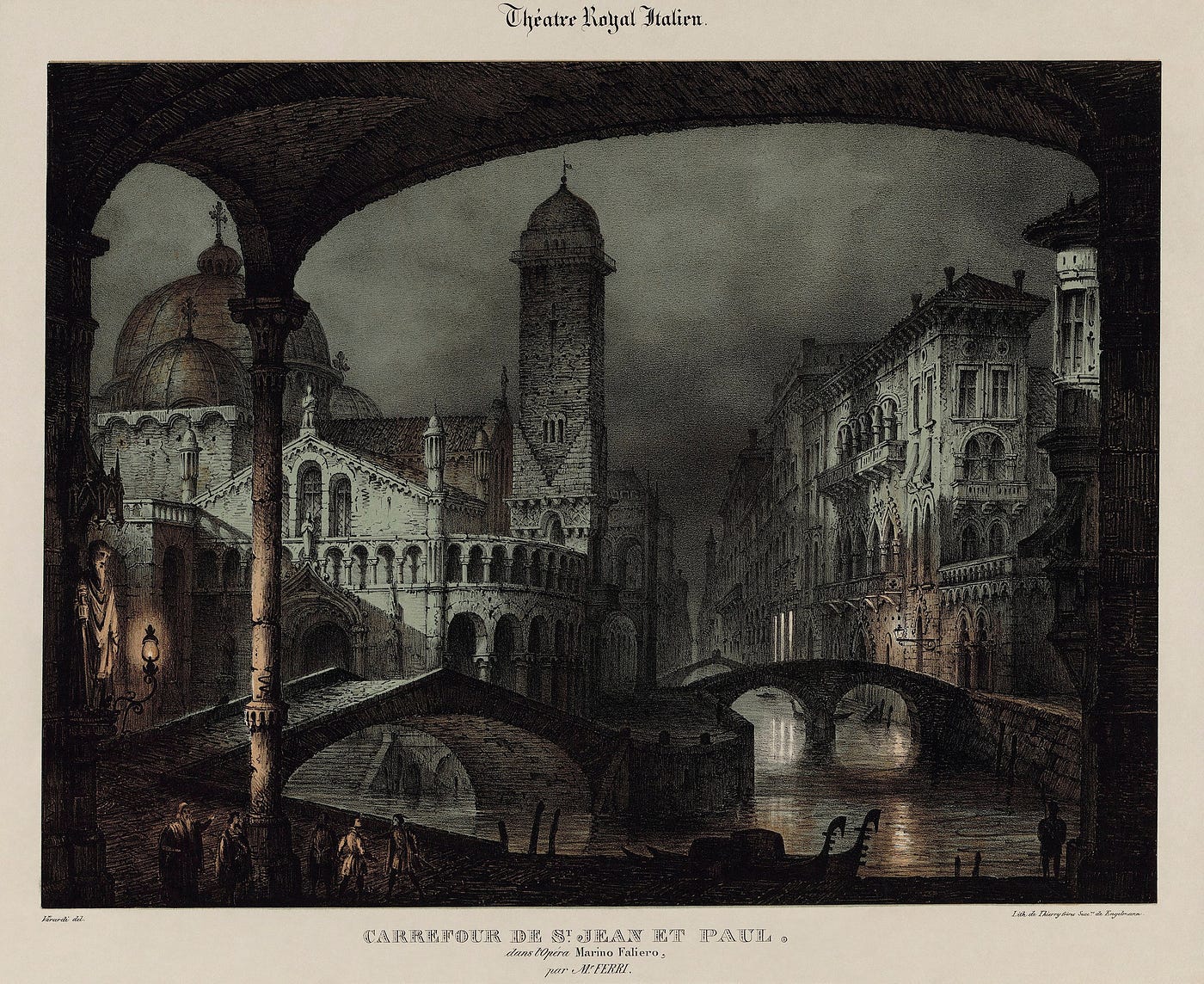
The first graphic design agency
The Wiener Werkstätte (which translates to Vienna Workshop) was established in 1903 by the painter Koloman Moser, the architect Josef Hoffmann, and the patron Fritz Waerndorfer.
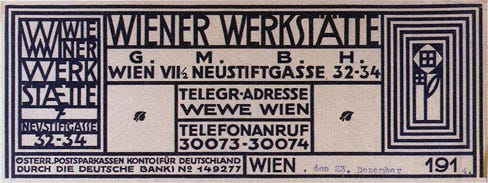
The Werkstätte brought together architects, artists, and designers working in ceramics, fashion, silver, furniture, and graphic arts. They're regarded as a pioneer of modern design and early influence in styles such as Bauhaus and Art Deco. As one of the first groups of professional artists working together, they influenced design standards for the coming generations.
Key art movements that influenced graphic design
Now you have a better idea of how graphic design began with the earliest form of visual and written communication. Let's dive into some key influential art movements that helped evolved graphic design.
You may notice how these art movements influence trends and how some of them even come back into style. It's important to have a solid background in the history of design so you can understand where these trends come from and how to use them in your designs.
Art Nouveau
Art Nouveau ("New Art") flourished in western Europe and the United States from the 1880s until the First World War. It was a deliberate attempt to abandon the historical styles of the 19th century.
Creators of Art Nouveau sought to revive good workmanship, raise the status of craft, and produce a genuinely modern design that reflected the utility of the items they were creating. One distinctive characteristic of the style is the use of organic, asymmetrical linework instead of solid, uniform shapes.
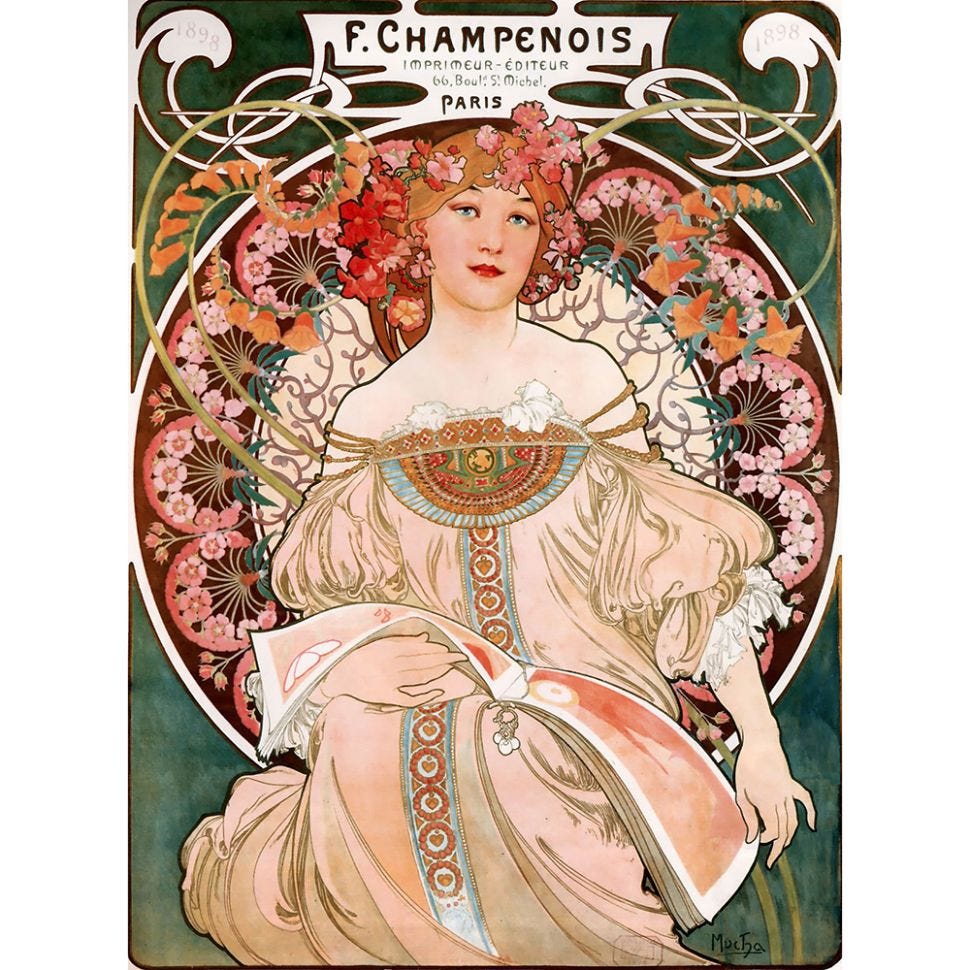
Bauhaus
Bauhaus was an influential art and design movement that began in 1919 in Weimar, Germany. The Bauhaus school, founded by Walter Gropius, launched a new way of thinking.
Six months after the end of World War I, the school encouraged artists and designers to use their talents to help rebuild the broken society. The Bauhaus grammar — a triangle, a square, and a circle — evoked this back-to-the-basics mentality. They challenged everything, including the usual method of schooling.
They combined arts and crafts, classical and avant-garde styles, form and function. Bauhaus design incorporated minimalism, geometric shapes, and simple typography. While the Bauhaus bubble lasted for only 14 years, its influence remains in just about every aspect of modern life today.
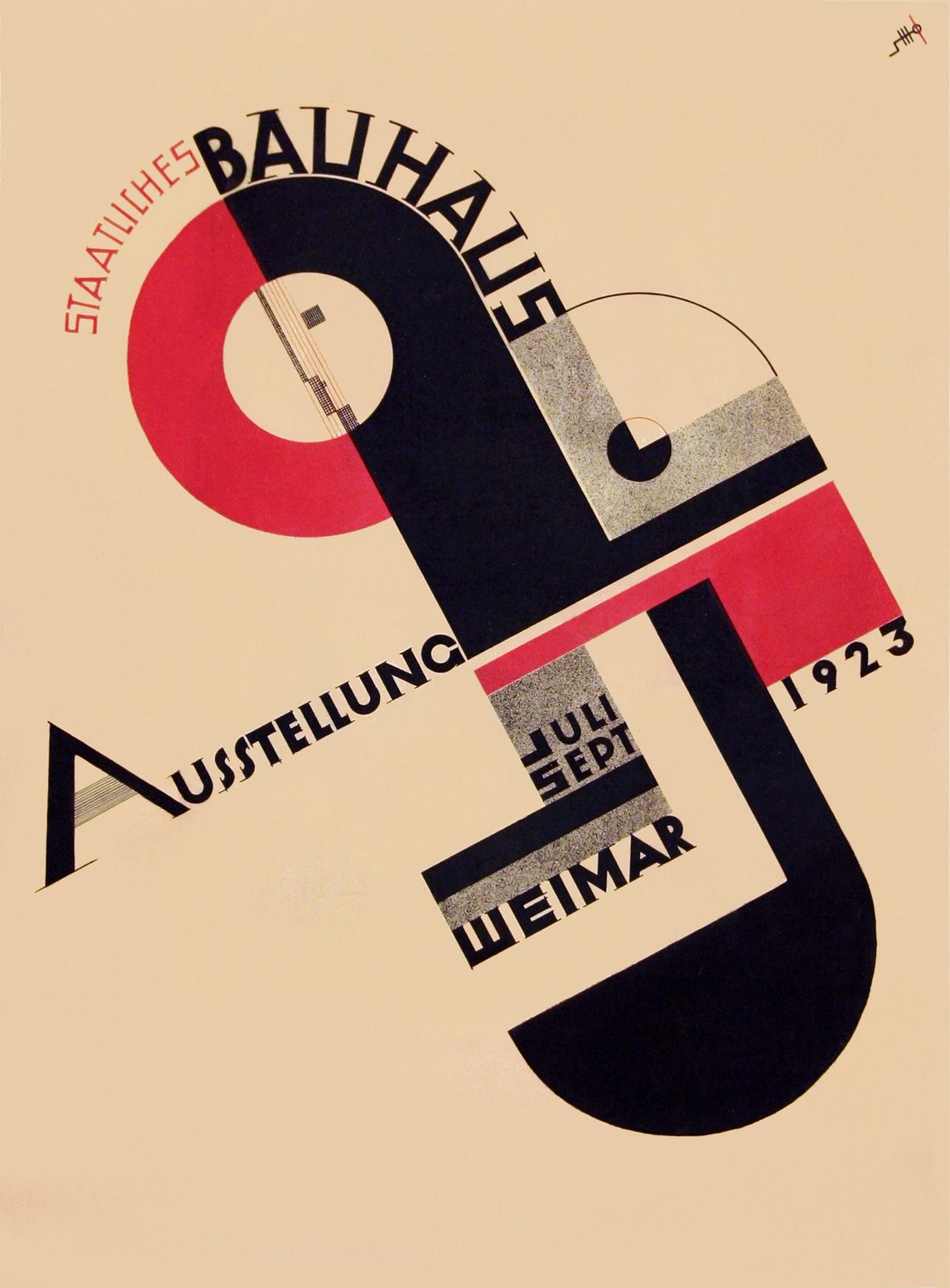
Art Deco
Art Deco began as a celebration in Paris in 1925. The same decade that gave us The Great Gatsby, the affordable car, and the first film with sound.
Style, elegance, and sophistication are the epitome of Art Deco design. Art Deco uses simple shapes, stylized and geometric ornamentation, and elaborate use of expensive materials, both natural and synthetic.
Spanning architecture, furniture, fashion, sculpture, and more, Art Deco encapsulates the decadent spirit of the 1930s. The Rockefeller Centre, Chrysler Building, and Empire State Building were all designed in this style.
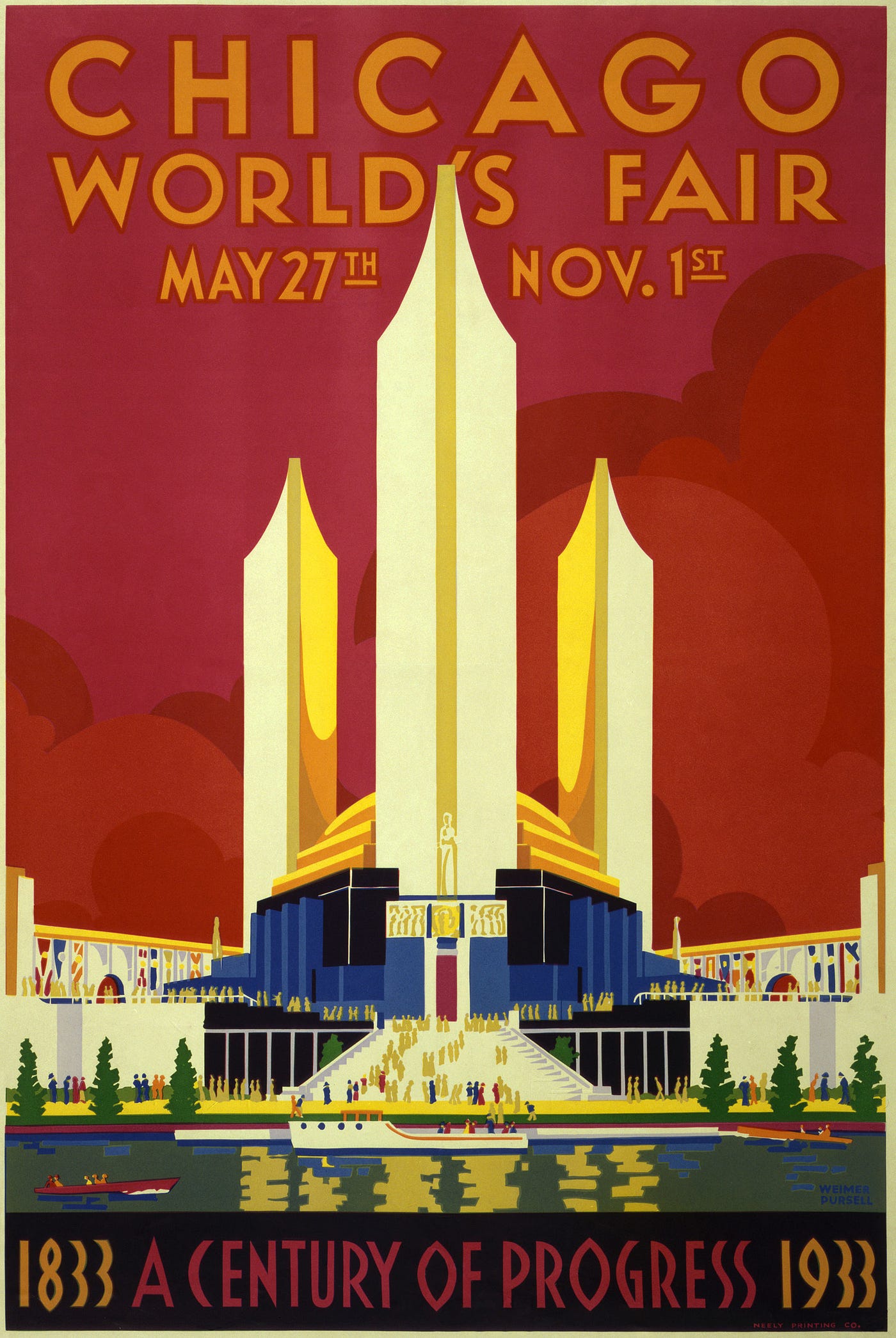
Swiss Design (The International Typography Style)
Building on the rational approach of the Bauhaus, this movement is all about function and universality. The style emerged in Russia, the Netherlands, and Germany in the 1920s and was further developed in Switzerland during the 1950s. Designers developed a cohesive, unified Modernist movement that became known as the Swiss Design or the International Typographic Style.
Logical, modular grid systems provided a structured framework to align different elements, something now considered essential for UI and graphic design. Realistic photography was preferred over more expressive illustration, alongside neutral sans-serif typefaces such as Helvetica.
Swiss design is minimal in nature. Minimalism has experienced a comeback in branding, UI design, and packaging. This trend is driven by influential companies such as Apple and Google who prioritize a clean, pared-back aesthetic above ornament and decoration. A vital contribution from the Swiss Design movement is their use of grids, can you imagine designing for the web without one?

Pop Art
Primarily a British and American cultural phenomenon that gained traction in the late 1950s and 1960s, Pop Art was named by art critic Lawrence Alloway because of the way it glorified popular culture and elevated common and unremarkable objects to iconic statuses.
The pop art movement began as a revolt against the dominant approaches to art, culture, and traditional views on what art should be. Sources of inspiration ranged from Hollywood movies, advertising, product packaging, pop music, and comic books, rejecting the pretensions of "high art" in favor of bold, graphic printmaking.

Postmodernism
Postmodernism was a reaction against modernism. While modernism was based on idealism and reason, postmodernism was born from skepticism and suspicion of reason. Modernists valued clarity and simplicity. Postmodernists embraced complex and often contradictory layers of meaning.
Young designers of the movement questioned the "form follows function" philosophy associated with Modernism derived from the Swiss Design Style (or International Typography Style). Designers created freely, breaking rules of design with the use of collage, distortion, vibrant colors, and abstract type.
During the late 1970s, April Grieman became known for her postmodern experimentation with her typographic innovations and colorful collage style.

The digital age
The introduction of digital tools provided a new, revolutionary way of creating graphic design. In 1984, Apple introduced the Macintosh computer. It used a simple, user-friendly interface that said "Hello", inviting consumers to be a creator themselves.
Photoshop launched in 1990 as a graphics editing software anyone could use to manipulate images and make professional designs. Basic programs like Microsoft Paint made graphic art accessible to the masses.
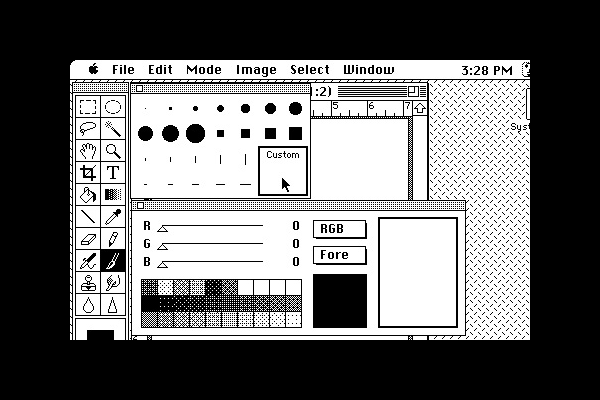
How art movements influence design trends
These are just some of the many art movements that flourished throughout time. Do you notice how one art movement influenced the behavior of the next? One style of design may be popular for a while, say for example the Swiss Design style, but then something like Postmodernism comes along and turns art and design completely upside down.
Similar to design trends, some will be popular for a while until eventually something else replaces them. Remember the gradients and bevels that existed in early app design when the iPhone first came about? Over time this design trend was replaced with a flat design aesthetic.

The future of visual design
As graphic design has evolved over time, it's become more divided with new design titles. Advertising and print design were once the core of graphic design. With the invention of the computer, Photoshop, and the Internet, a surge of new design disciplines emerged. Web design, interactive design, UX/UI design, and product design to name a few. Even though these are specialized fields within the design community, they all stemmed from graphic design.
Now that you understand the rich history of graphic design, how can you prepare for the future of visual design?
Continue to grow as a multi-disciplinary designer. Be prepared and know that design will shift along with trends that come and go. Specialization can lead to success but it's important to understand the umbrella of visual design. Take what you know, continue to learn, and evolve with the future of design.
Old Graphic Design Production Tools
Source: https://uxdesign.cc/a-brief-history-of-graphic-design-90eb5e1b5632
Posted by: blairroyes1951.blogspot.com

0 Response to "Old Graphic Design Production Tools"
Post a Comment